Wrought iron
Wrought iron
Wrought Iron: A Glossary Entry
Wenn Sie den Begriff Wrought Iron in der Welt der Stahlherstellung und des Stahlhandels hören, bezieht er sich auf ein sehr reines Eisenprodukt, das aus der Flussschmiedetechnik hervorgeht. Ironisch genug, obwohl es "Wrought Iron" ist, also "bearbeitetes Eisen" genannt wird, ist es tatsächlich viel weicher und schmiedbarer als andere gängige Eisensorten.
Herstellung von Wrought Iron
Der Prozess, um Wrought Iron zu erschaffen, ist ein bisschen wie backen. Einfach gesagt, nimmt man Roheisen und "kocht" es mit Schlacke, was hauptsächlich aus Silizium, Aluminium und Sauerstoff besteht. Dieser Prozess führt dazu, dass das Eisen geschmeidiger wird. Der hohe Gehalt an Schlacke, der in Wrought Iron bleibt, gibt ihm auch eine "körnige" Textur, die man beim Anfassen spüren kann.
Wrought Iron in der heutigen Industrie
Heute verwenden wir Wrought Iron nicht mehr so häufig wie in der Vergangenheit. Der Hauptgrund dafür ist, dass der Herstellungsprozess sehr arbeitsintensiv und teuer ist. Stattdessen verwenden wir meist Stahl, der auch sehr stark ist und leichter zu produzieren. Nichtsdestotrotz findet Wrought Iron immer noch Verwendung in speziellen Projekten, wo seine individuellen Eigenschaften geschätzt werden. Zum Beispiel in der Restaurierung historischer Gebäude, wo Originalmaterialien benötigt werden, um den ursprünglichen Charakter der Gebäude zu erhalten.
Handel mit Wrought Iron
Im Stahlhandel ist Wrought Iron ein spezialisiertes Produkt, das oft auf Bestellung gefertigt wird. Sein Preis ist höher als der von Stahl, was auf die Komplexität seiner Herstellung zurückzuführen ist. Trotz des höheren Preises wird Wrought Iron wegen seiner ästhetischen und praktischen Vorteile immer noch geschätzt. insbesondere für traditionelle oder dekorative Anwendungen.
Fazit
Wrought Iron ist ein dynamisches und vielseitiges Material in der Welt der Stahlproduktion und des Stahlhandels. Trotz der relativen Seltenheit in der modernen Produktion, repräsentiert es immer noch einen einzigartigen und wertvollen Aspekt dieser Branche.
Blog Posts with the term: Wrought iron
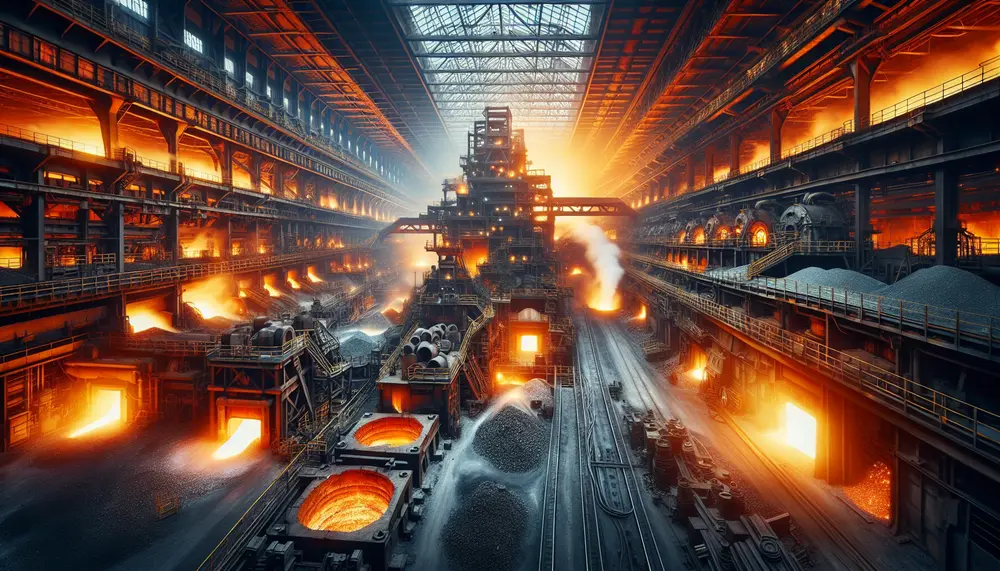
The Bessemer process, developed by Henry Bessemer in the 1850s, revolutionized steel production by efficiently removing impurities from molten pig iron using blown air and enabling mass production. This innovation significantly reduced costs and time for steel manufacturing, facilitating industrial...
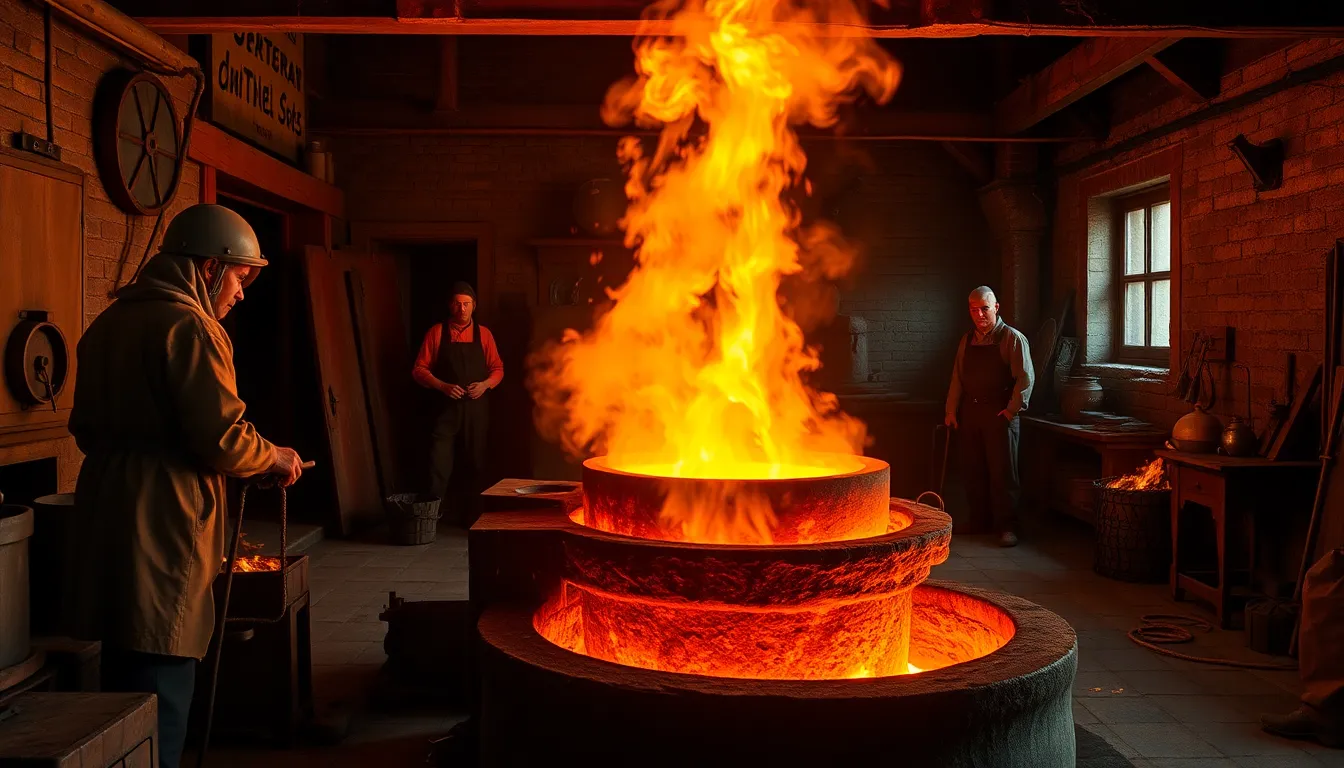
The article traces the evolution of steelmaking from ancient techniques to significant medieval innovations, highlighting early methods like iron carburization and bloomery processes that evolved into more efficient practices with the introduction of blast furnaces. It also covers Renaissance advancements...
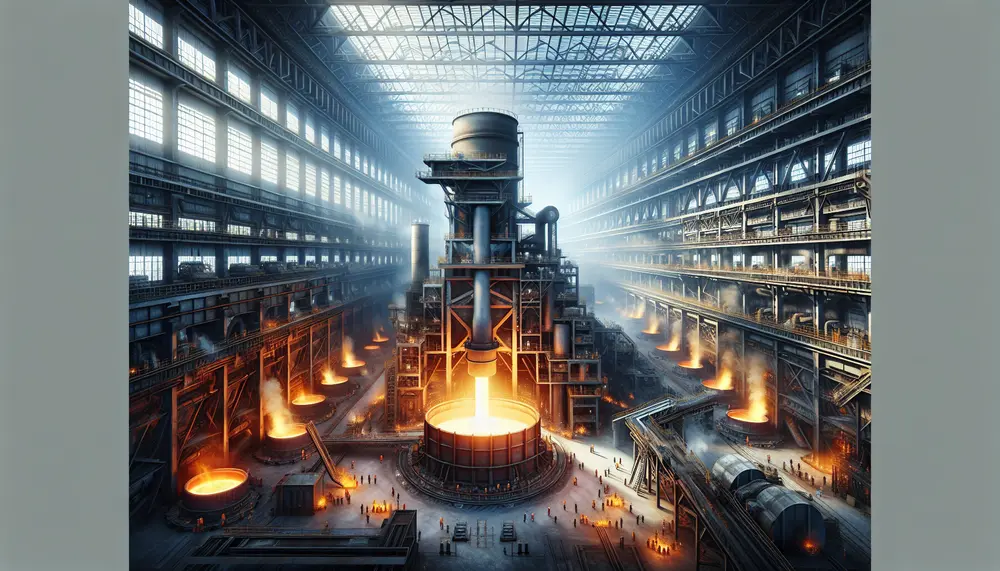
The article traces the history of steelmaking from early iron discoveries around 2,500 BCE to advanced techniques like Chinese cast iron production and Indian Wootz steel. It highlights key innovations such as smelting, forging by the Chalybes, and global influences...
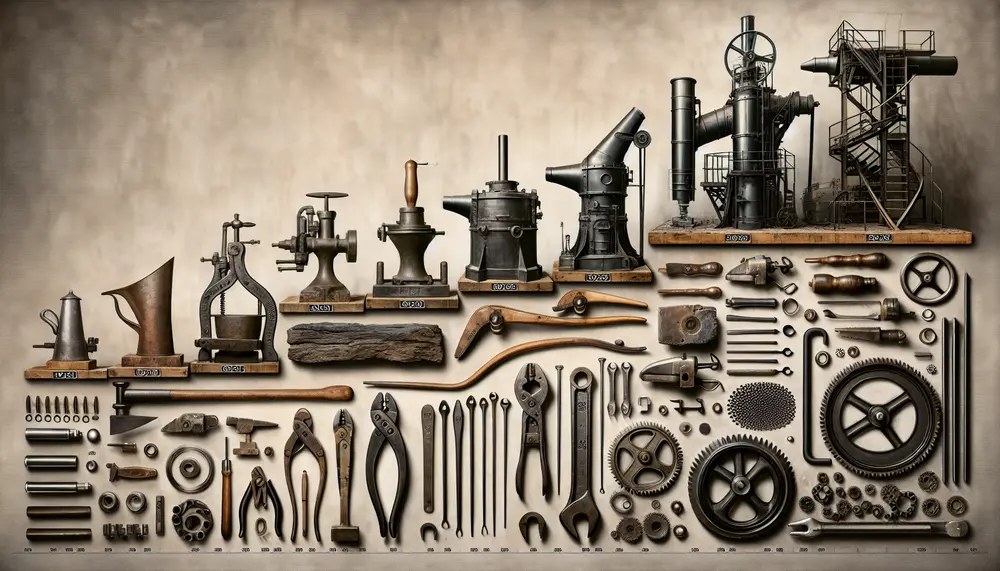
Steelmaking has evolved from early iron manipulation to advanced processes like the Bessemer method, which revolutionized mass steel production and infrastructure development. Technological advancements such as open hearth furnaces and electric arc furnaces further refined steel's properties, while British dominance...
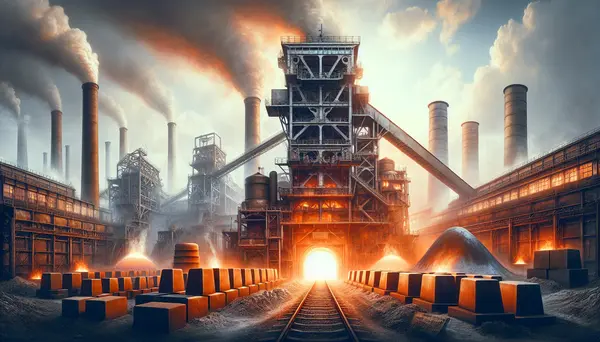
The history of steel production spans over 4000 years, evolving from the creation of rudimentary iron tools to advanced high-strength steel. Key developments include smelting techniques in neolithic times, cementation in the 17th century, and major advancements during the Industrial...
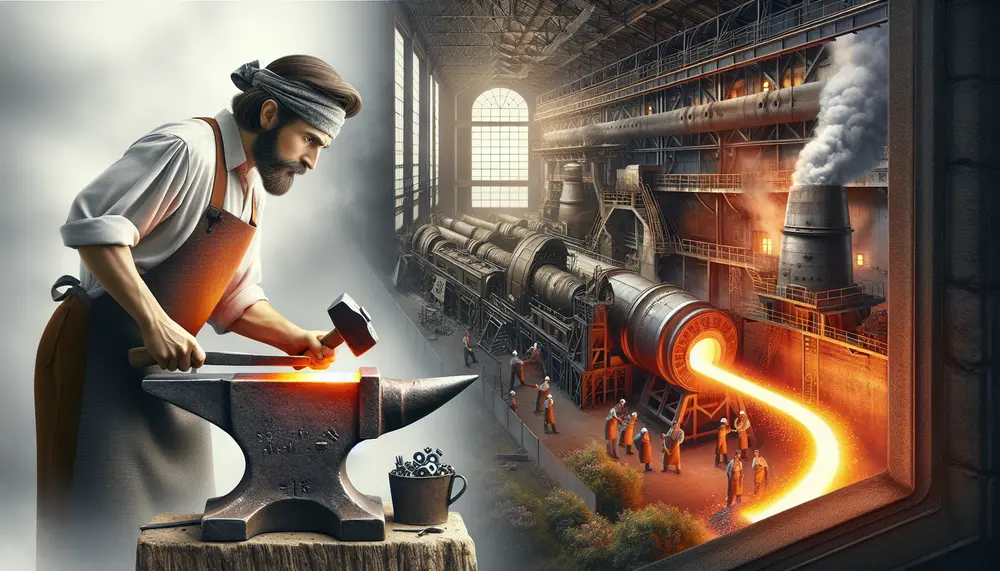
The article traces the evolution of steelmaking over nearly 4,000 years, highlighting key periods and innovations from ancient blacksmithing to modern techniques. It covers significant advancements such as Wootz steel in India, Chinese blast furnaces, medieval Damascus steel, and early...
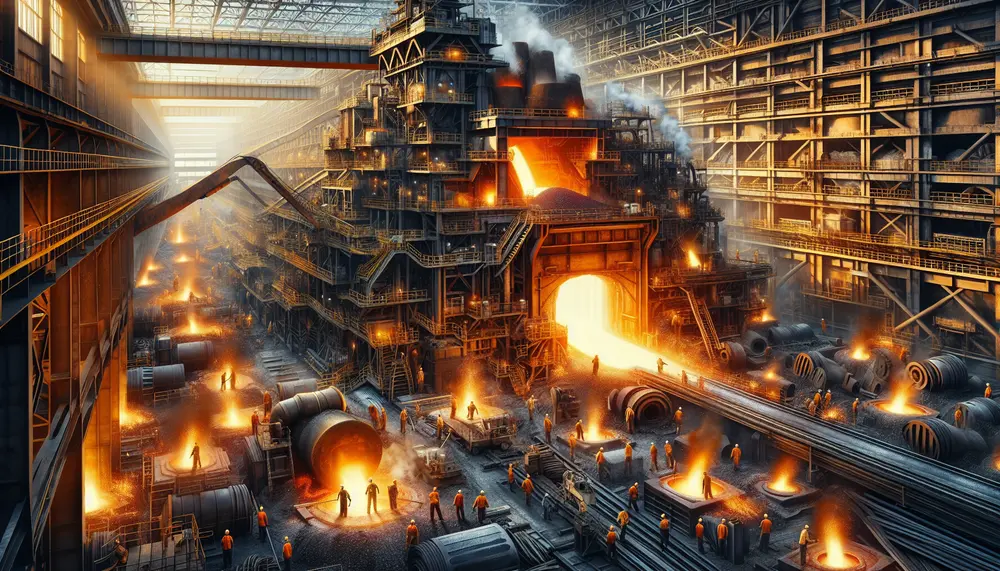
Steel is indispensable in modern society due to its versatility and strength, playing crucial roles in construction, transportation, energy sectors, and everyday life. The steel-making process involves several complex steps from raw material preparation to rolling and finishing, while traditional...
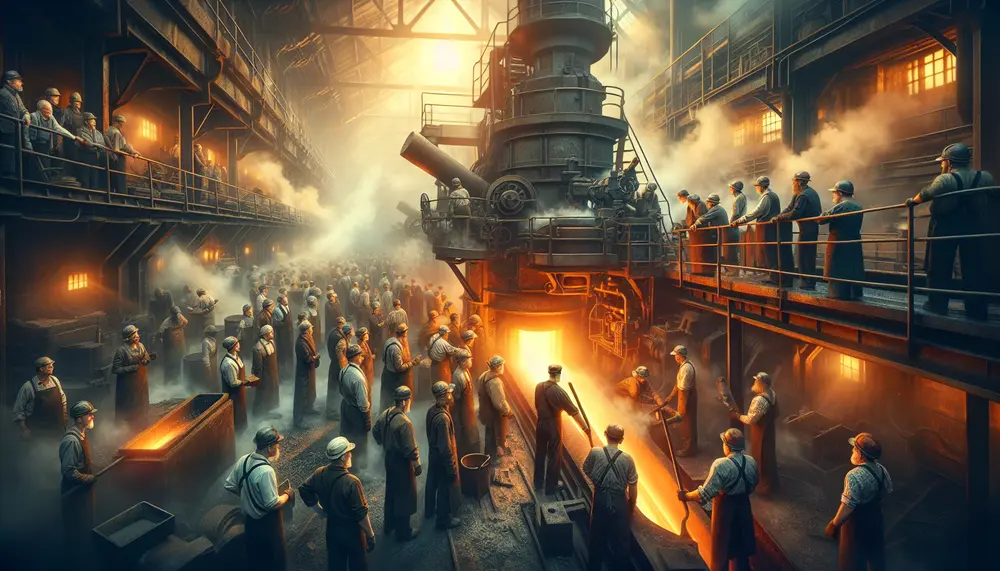
The article explores the rich history of steelmaking, from ancient techniques like crucible and blast furnace methods to medieval advancements such as pattern welding, culminating in transformative innovations during the Industrial Revolution with processes like Bessemer and open-hearth furnaces. These...
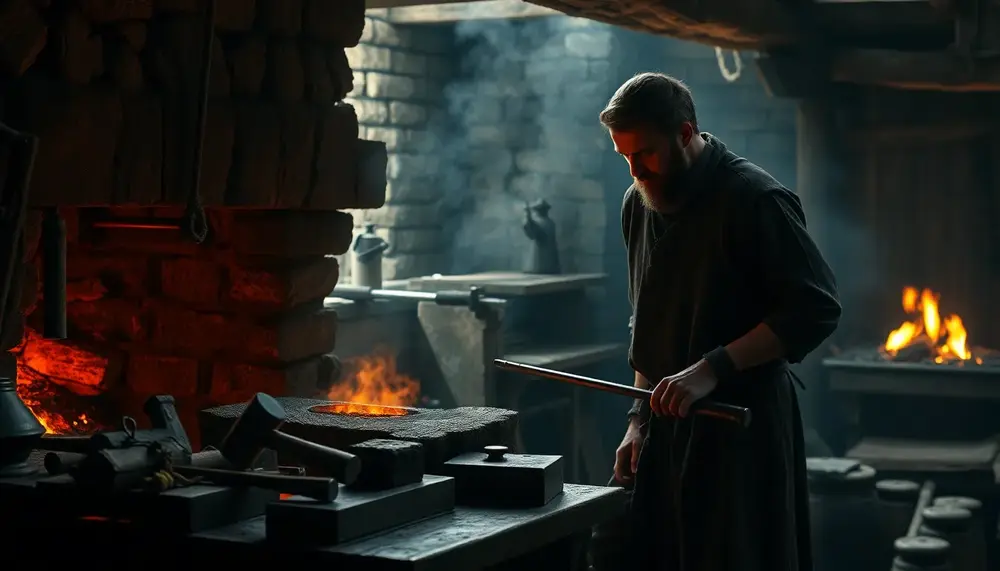
The art of medieval steelmaking combined intuition, tradition, and a deep understanding of metallurgy to create strong yet flexible materials essential for tools, weapons, and status symbols. Despite limited scientific knowledge and resources, artisans mastered techniques like carbon infusion and...
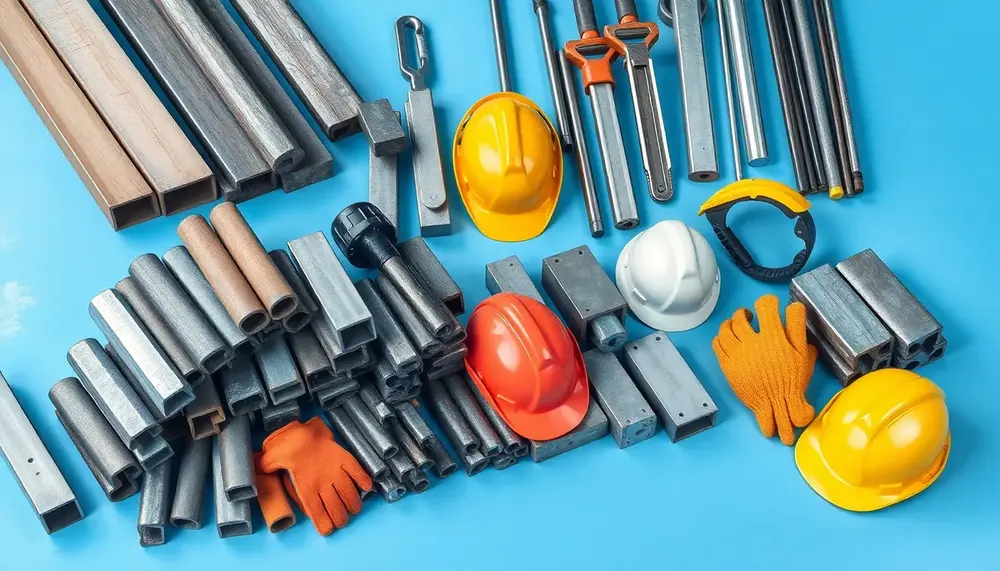
Steelmaking nouns are essential for clear communication and safety in the steel industry, with evolving terminology requiring an up-to-date glossary. This article explains key terms like alloy, arc furnace, austenite, blast furnace, billet, basic oxygen process, carbon content, converter, casting,...
